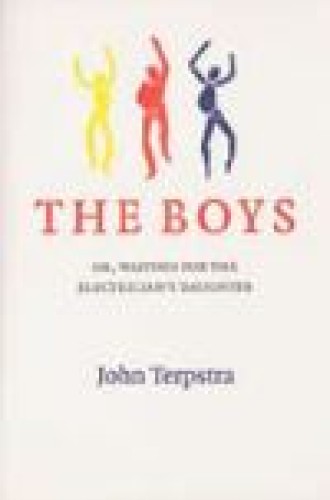The Boys, or, Waiting for the Electrician's Daughter
Once there were three boys. Their names were Neil and Paul and Eric. This was in New Jersey some years ago.
Not one not two but all three had muscular dystrophy. Their bodies shriveled slowly. They had a brave mother and father and sister who bent every ounce of their effort and heart to take care of them, and when their sister fell in love, her boyfriend befriended the boys, and even after they died—all three boys, within a few months of each other, as they reached the end of their teenage years—the boyfriend remembered the courage and fears and wheelchairs and games and jokes and tears and exhaustion and wit and tension and the parade of quiet people from church and town and clan who helped the boys live lives of zest and grace. And finally he wrote this book, which is, as you might imagine, remarkable.
For many reasons, not least that it is not facile hagiography. There is pain and strain here, and a gentle honesty about the boys’ parents, who never had time for each other, and about the boys, who didn’t complain much but sometimes raged at their cages, and about the sister and the boyfriend, who spent the first years of their romance with bedpans and lung pumps.
In lesser hands this might have been a mediocre-to-awful television movie, but John Terpstra is a poet fascinated by grace under duress, not melodrama. His lean, taut story is presented in admirably clear and direct prose—the only conceivable way to begin to truly convey the extraordinary courage of these brothers, the family’s wrestling with suffering, and the quiet muscle of neighbors and friends who came, day after day, with no hope of recompense or renown. They came, and Mary Ann Vande Ree’s family labored so, because love is the essential coin and bone and language of human beings at their best.
That we are capable of far more grace than we know is the unspoken theme of Terpstra’s lovely book—a message we cannot hear too often as we cower under lies and bullets. That The Boys is also a beautiful tactile object, creatively typeset and organized in brief meditative sections rather than orthodox chapters, makes the whole experience of reading it a haunting and unforgettable prayer—which must certainly have been the experience of writing it as well.
“There is no answer to the question of where the disease came from or why one family was struck so,” writes Terpstra. “Ask a different question. Ask after the boys’ liveliness, their imperishable gift. . . . The body makes theologians of us all.”





